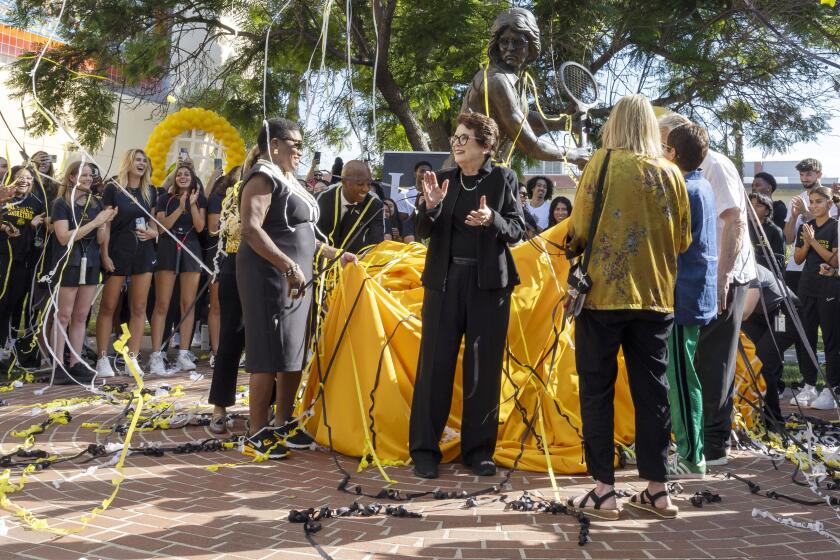What to expect along California coast when tsunami waves arrive

- Share via
Starting around 12 a.m. Wednesday, the California coast was set to experience impacts from the massive quake that hit off Russia’s eastern coast, with the biggest waves predicted along the North Coast where the most severe tsunami alert has been issued.
A tsunami warning was in place late Tuesday from Cape Mendocino in Humboldt Country through Del Norte County, while a more moderate tsunami advisory was in place along the rest of the California coast, according to the U.S. Tsunami Warning System.
Officials estimated that wave size in Southern California would be less than 1 foot. In Long Beach, city officials said that even a 1-foot tsunami could impact low-lying areas, including the Long Beach Peninsula and the marinas.
In Northern California, the waves were expected to be up to 5 feet in Crescent City, an area historically vulnerable to tsunamis. Crescent City officials recommended the evacuation of the Lighthouse Cove RV Park.
Modest tsunami waves arrived in California after a powerful earthquake in Russia, damaging a dock in Crescent City. Advisories have been downgraded or canceled for the majority of the state.
Here is what to expect:
Size of waves
- Officials estimated that wave size in Southern California would be modest, and if those predictions hold, waves are unlikely to cause major problems. But in the north, the waves could be bigger.
- The largest impact was expected in Crescent City in Del Norte County, where waves of up to 5 feet were predicted.
- Waves of up to 3.8 feet were predicted in Port San Luis in San Luis Obispo County. The rest of the California coast was predicted to see waves of 1.3 feet or less, with waves in Los Angeles expected to be less than 1 foot.
Timing
- Fort Bragg in Mendocino County and Crescent City in Del Norte County were forecast to be the first affected by any possible tsunami, starting just before midnight. Crescent City could endure tsunami conditions for as long as 30 hours, and Fort Bragg, nine hours.
- Then, in the early hours of Wednesday morning, potential waves could reach Monterey at 12:15 a.m., San Francisco at 12:40 a.m., Santa Barbara at 12:45 a.m., the Los Angeles harbor at 1:05 a.m., Newport Beach at 1:10 a.m., and Oceanside and La Jolla at 1:15 a.m.
Warnings
- So far, evacuations have been recommended in the lowest-lying areas of Crescent City, including an RV park.
- In the San Francisco Bay Area, officials from San Mateo and Alameda counties urged people to stay out of the coastal waters and beaches until the tsunami advisory is lifted. But no evacuation order was issued.
- The Humboldt County Office of Emergency Services urged people to move out of the water, off the beach and away from harbors.
- On the Central Coast, Morro Bay’s Harbor Patrol notified people on live-aboard boats and advised them to come ashore.
- The Monterey County Sheriff’s Office issued an evacuation warning to people living aboard boats in the Moss Landing area.
- The City of L.A. Emergency Management Department told people to leave beaches, marinas and harbors, warning of strong currents that could be dangerous for swimmers and cause boats to detach from docks.
Where are California’s tsunami hazard zones?
Tsunami hazard zones can extend to bayside and riverside areas relatively far from the Pacific coast.
Zoom in and move the map to see the state’s tsunami hazard areas
California Geological Survey
Sean Greene LOS ANGELES TIMES
When tsunami waves hit in 2022, California experienced relatively minor effects. But at Santa Cruz Harbor, waves flooded streets and a parking lot, where cars floated about like toy boats. Water poured into bathrooms and electrical transformers onshore. It caused an estimated $6 million in damage to Santa Cruz alone, officials later said.
In 2011, a tsunami from the devastating Japan earthquake also battered some coastal areas of California, resulting in more than $100 million in damage at marinas and harbors, state officials estimate. In Crescent City, residents reported that about three dozen boats were “crushed” in the harbor and that surging waters significantly damaged or destroyed many docks.
One person died after being swept into the sea, reportedly while taking pictures of the tsunami.
In 2006, Crescent City residents were caught off guard by significant seawater surge hours after a tsunami warning expired, causing significant harbor damage.
Most notably, the Alaska earthquake of 1964 set off a catastrophic tsunami that devastated Crescent City, washing away 29 city blocks and killing at least 11 people. A series of nighttime waves crashed through the coastal city, destroying or damaging 91 houses and 172 businesses.
California officials also have records of tsunamis hitting Northern California in 1960 and 1946, which each left at least one person dead. The 1946 tsunami, triggered by an 8.6-magnitude earthquake near Alaska, flooded parts of Half Moon Bay.
Among the earliest records of a tsunami in California is an event in 1812 when a large earthquake in the Santa Barbara area “was followed by a tsunami that wiped out many coastal villages and destroyed ships in the harbor,” according to the U.S. Geological Survey.
Preparation
Look out for tsunami hazard maps in your area. If maps or signs are not available, state officials suggest getting to an area 100 feet above sea level or two miles inland. “If you cannot get this far, go as high as possible. Every foot inland or upwards can make a difference,” state officials say.
The National Weather Service operates two tsunami warning centers, with a goal of monitoring for tsunamis and the earthquakes that may cause them, to send tsunami alerts. To get official notifications of a tsunami warning, sign up for text message alerts from your local government, get a battery-powered National Oceanic and Atmospheric Administration weather radio, or listen for TV, radio or automated telephone announcements.
Sign up for alerts here:
- The National Weather Service Tsunami Warning System
- The National Oceanic and Atmospheric Administration Weather Radio
- NOAA Wireless Emergency Alerts
- Local emergency alerts (scroll to the bottom of the page)
Officials urge people not to go to the coast to see the tsunami, and noted that you can’t surf a tsunami.
“You can’t surf a tsunami, because it doesn’t have a face” — where the surfboard grips a wave — according to the University of Hawaii. In 2022, San Francisco firefighters had to rescue experienced surfers from the incoming tsunami.
That tsunami caused about $11.5 million in damage to harbor infrastructure, waterways and boats in California, the California Geological Survey has said.
Times staff writer Connor Sheets contributed to this report.
More to Read
Sign up for Essential California
The most important California stories and recommendations in your inbox every morning.
You may occasionally receive promotional content from the Los Angeles Times.
















